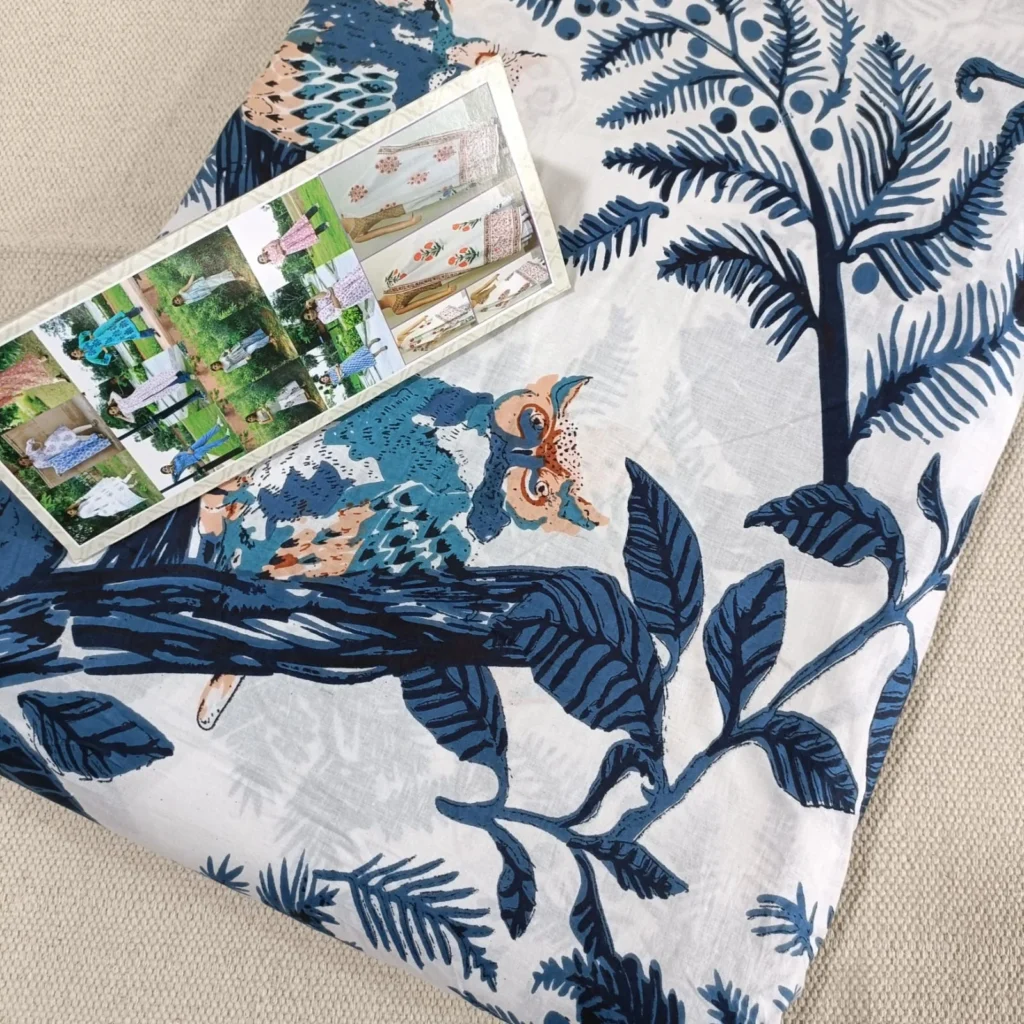Introduction
Screen printing is a time-tested method that provides textiles with unique, colorful designs. Knowing the ins and outs of screen printing can improve your work. whether you’re a fashion designer hoping to produce unique garments or a do-it-yourself enthusiast wanting to customize your wardrobe. The Ultimate Guide to Screen Printing Fabric. This all-inclusive tutorial will help you become an expert at screen printing on cloth by covering everything from the basics to complex processes.
What is Screen Printing?
Definition and Overview Screen printing, also known as serigraphy, is a printing technique where ink is pushed through a mesh screen onto fabric to create designs. The process involves using a stencil to block out areas of the screen, allowing ink to pass through only the desired parts.
Brief History of Screen Printing Originating in China during the Song Dynasty (960-1279 AD), screen printing has evolved significantly. The technique spread to Japan and then to Europe, where it gained popularity in the 20th century with the rise of modernist art movements.
Why Screen Printing Fabric?
Benefits of Screen Printing on Fabric Screen printing offers numerous advantages for fabric printing:
- Durability: The ink bonds well with fabric fibers, resulting in long-lasting designs.
- Vibrancy: Rich, opaque colors can be achieved, making designs stand out.
- Versatility: Suitable for various fabrics and large print runs.
Common Uses in Fashion and Design Screen printing is widely used in fashion for custom t-shirts, hoodies, and accessories, as well as in home decor for printed cushions, curtains, and tablecloths.
Understanding Screen Printing
How Screen Printing Works Screen printing involves creating a stencil (or screen) for your design, then using a squeegee to push ink through the screen onto the fabric. Each color requires a separate screen.
Basic Principles of Screen Printing The key principles include creating a stencil, applying ink through the stencil onto the fabric, and curing the ink to ensure it adheres properly.
The Screen Printing Process Step-by-Step

- Design Creation: Develop your design using graphic software.
- Screen Preparation: Coat the screen with a light-sensitive emulsion and let it dry.
- Exposure: Place the design on the screen and expose it to light to harden the emulsion.
- Washing: Rinse the screen to reveal the design.
- Printing: Position the screen over the fabric and use a squeegee to apply ink.
- Curing: Heat the fabric to set the ink.
Types of Screen Printing
Traditional vs. Modern Techniques Traditional screen printing involves manually preparing screens and using basic tools. Modern techniques include automated presses and digital screens, which offer increased efficiency and precision.
Digital Screen Printing Digital screen printing combines traditional screen printing with digital technology, allowing for more detailed and complex designs, especially for smaller print runs.
Selecting the Right Fabric
Popular Fabrics for Screen Printing
- Cotton: Highly absorbent and holds ink well, making it ideal for most designs.
- Polyester: Offers durability and resistance to wrinkles but requires specific inks.
- Blends and Specialty Fabrics: Fabrics like cotton-polyester blends and performance fabrics offer different qualities and may require special treatment.
Fabric Preparation and Treatment
Steps Before Treatment Fabric that has been properly prepared can improve ink adherence. For getting rid of colors and wrinkles, the fabric needs to be washed and dried.
Choosing the Right Fabric for Your Design Consider the design complexity, ink type, and fabric properties to select the most suitable fabric for your project.
Screen Printing Equipment and Materials
Essential Screen Printing Tools
- Screens and Frames: The frame holds the mesh screen, which is used to transfer ink onto the fabric.
- Squeegees: Used to push ink through the screen onto the fabric.
- Ink Types: Various inks are available, each suited to different fabric types and designs.
Choosing the Right Ink
Water-Based vs. Plastisol Inks
- Water-Based Inks: Environmentally friendly and provide a soft finish.
- Plastisol Inks: Durable and vibrant but require heat curing.
Specialty Inks (Glow-in-the-Dark, Metallic, etc.) Specialty inks add unique effects to your designs, such as glow-in-the-dark or metallic finishes.
Maintenance of Equipment
Cleaning and Storing Screens Regular cleaning of screens is crucial to prevent ink buildup and ensure the longevity of your equipment.
Ink Storage and Handling Proper storage of inks prevents drying and contamination, ensuring consistent quality.
Techniques and Tips for Effective Screen Printing
Creating Your Design
Design Considerations for Fabric Printing Ensure your design is compatible with screen printing by considering color separations and design complexity.
Using Design Software for Screen Printing Software like Adobe Illustrator or CorelDRAW can help create and prepare designs for screen printing.
Transferring Designs to Screens
Stenciling Techniques Learn various stenciling methods to accurately transfer your design onto the screen.
Emulsion and Exposure Process Understand the emulsion coating and exposure process to achieve sharp, detailed prints.
Printing Techniques
Single Color vs. Multi-Color Printing Single-color designs are simpler and faster, while multi-color prints require precise alignment of screens.
Troubleshooting Common Printing Issues Address common issues like ink bleeding, misalignment, and screen clogging to ensure high-quality prints.
Trends and Innovations in Screen Printing
Eco-Friendly Screen Printing
Sustainable Inks and Fabrics Explore eco-friendly options like water-based inks and organic fabrics to reduce environmental impact.
Reducing Waste in the Printing Process Implement practices to minimize waste, such as using efficient printing techniques and recycling materials.
Customization and Personalization Trends
Popular Custom Designs and Patterns Stay updated on current trends in custom designs and popular patterns to inspire your projects.
Innovations in Print Technology Keep an eye on new technologies and techniques that push the boundaries of screen printing.
Care and Maintenance of Screen Printed Fabrics
Washing and Handling Screen Printed Items Proper care, such as washing in cold water and avoiding high heat, preserves the longevity of screen-printed designs.
Best Practices for Longevity Follow best practices for maintaining screen-printed fabrics to keep them looking fresh and vibrant.
Avoiding Common Mistakes
Repairing and Touching Up Prints Learn techniques for fixing and touching up prints to address any imperfections.
How to Fix Faded or Damaged Prints Use appropriate methods to restore faded or damaged prints, extending the life of your screen-printed items.
Frequently Asked Questions (FAQs)
- What fabrics are best for screen printing? Cotton and polyester are popular choices, with each offering different properties and benefits.
- How do I choose the right ink for my project? Consider the fabric type and desired finish to select the appropriate ink.
- Can screen printing be done at home? Yes, with the right equipment and materials, screen printing can be done at home.
- What are the common issues faced in screen printing and how can they be resolved? Common issues include ink bleeding and screen clogging, which can be resolved with proper techniques and equipment maintenance.
- How do I ensure the durability of my screen printed designs? Use high-quality inks, follow proper curing procedures, and care for printed items according to best practices.
Conclusion
Summary of Key Points Screen printing is a versatile and effective method for creating custom fabric designs. By understanding the techniques, equipment, and trends, you can achieve professional-quality results.
Final Thoughts on Screen Printing Fabric With the right knowledge and tools, screen printing can be an exciting and rewarding process. Embrace the creative possibilities and keep experimenting to refine your skills.
